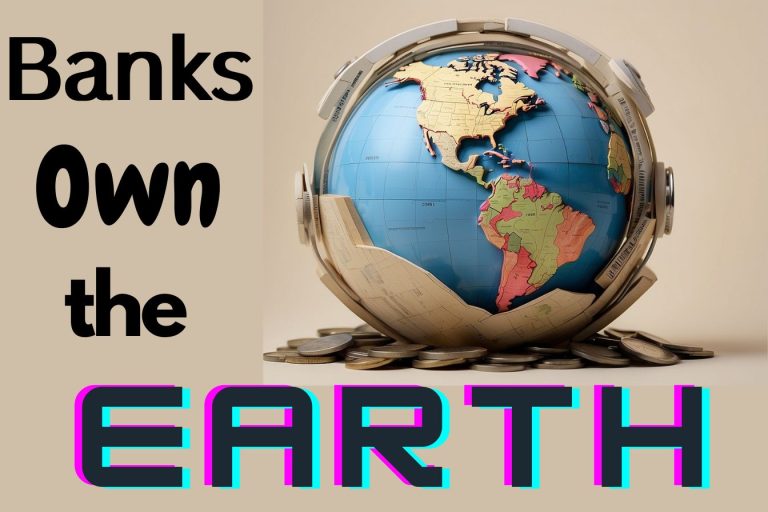Where Money Comes From
Banks create currency. Money does not originate from economic activity. Many people have the misconception that money naturally emerges from the process of people engaging in economic activities such as making, growing, selling, and producing things. However, this is not the case. Money must be intentionally generated and distributed.
1. Physical Currency
The central bank of the government creates this money. It is also called base money. It can be in the form of paper bills or coins. Physical currency represents only a small portion of the economy, usually between 3 and 8 percent. The central bank creates it to ensure that private banks have enough cash to fulfill their obligations. When you go to an ATM to withdraw cash, the bank needs to have enough physical currency on hand to give it to you.
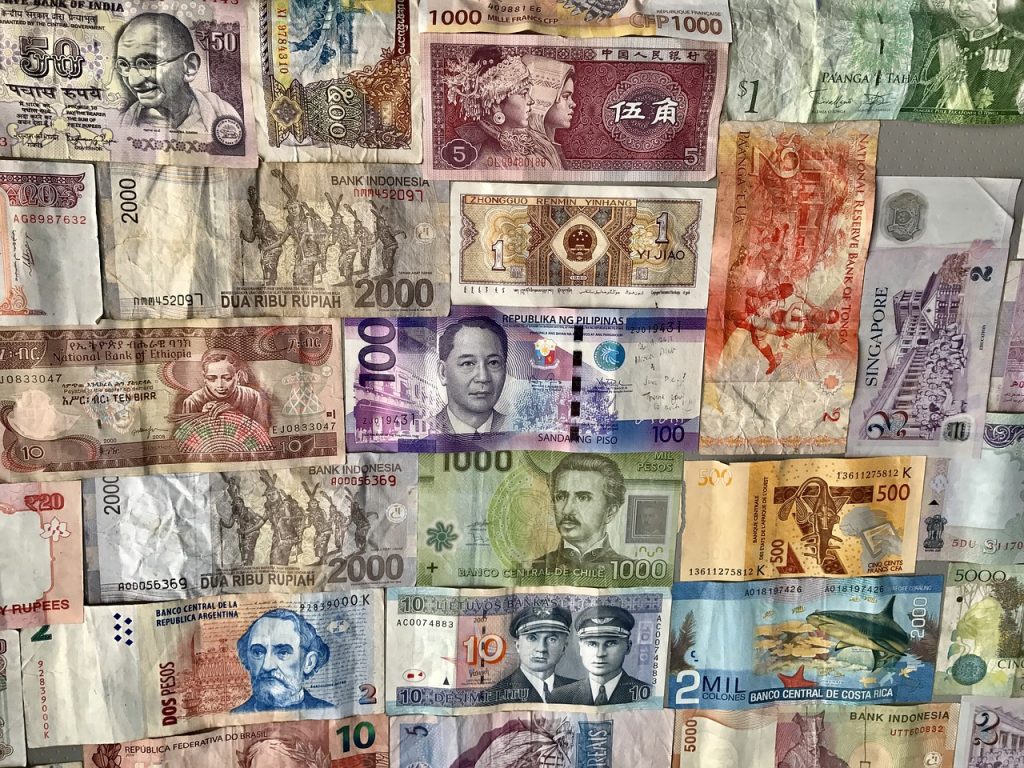
The government makes a profit from printing the currency and minting the coins. This profit is known as seigniorage. It is the difference between the cost of producing the currency and selling it to the banks. All the profit made from creating physical currency goes to the Treasury, which then uses it for government funding. Seigniorage is beneficial for both the government and the taxpayers. It helps reduce the government’s debt and lessens the financial burden on individuals.

2. Government Debt
When the government needs more money than what they get from taxes, they ask the Treasury for money. The Treasury, in turn, issues bonds on behalf of the government. A bond is essentially a form of debt. When you buy a government bond, you give or loan money to the government, and they promise to pay it back later with extra money called interest. The government will use the taxes collected from the people of the country to pay you back in the future. You weren’t given a choice about paying taxes today for the good times we had in the past. Our children also aren’t asked if they want to work hard in the future to pay for the good times we are having now.
The Treasury conducts a bond auction, where banks purchase the majority of these bonds using currency. It’s like banks and others lending their money to the government. When these bonds reach maturity, the government must repay its debt. It does so by buying back these bonds using new currency, essentially creating money out of nothing. The banks and others then make a profit by earning interest. Lending money to the government is seen as a relatively safe investment since there is minimal risk involved. This process of borrowing and repaying continues repeatedly. It benefits the banks and increases the national debt, which is mostly paid back through taxes.
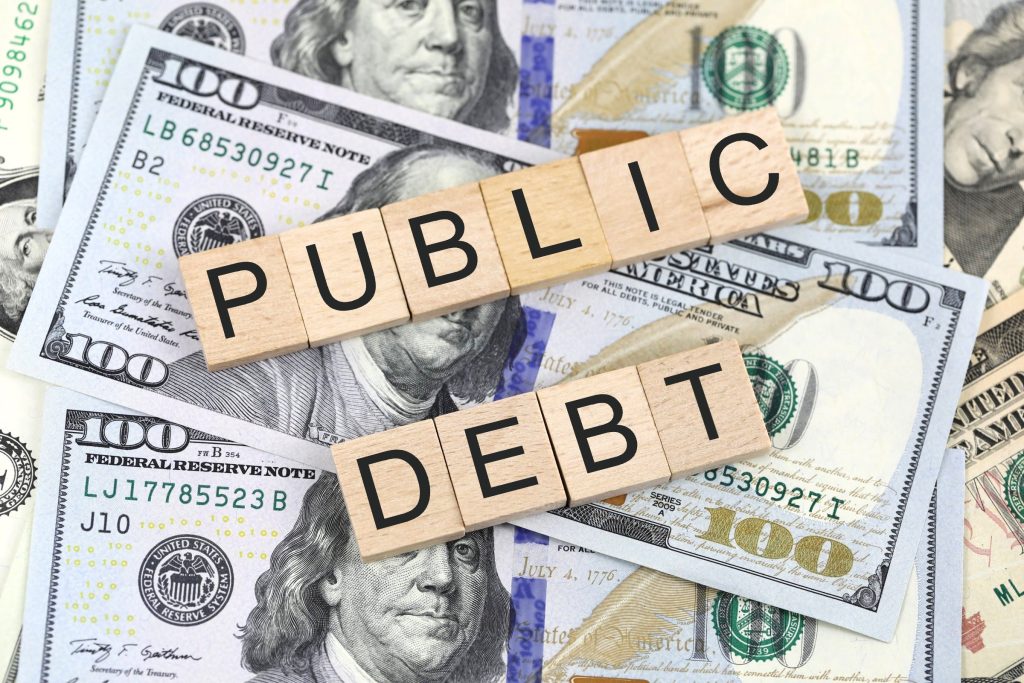
The European Central Bank stated in a report back in 2016 that central banks cannot go bankrupt because they have the power to generate more money. This ability to create currency shields them from insolvency. However, this practice of creating money results in politicians consistently increasing the national debt.
3. Bank Debt
As the price of stuff keeps going up, it becomes necessary to take out loans to be able to afford them. When a bank gives you a loan, it’s not using someone else’s savings or the money it already has. Instead, it creates new currency virtually out of thin air by simply typing it into a computer. This newly created money is just a digital representation of the government’s currency that you can use to make purchases. However, the bank benefits the most from this new money because it gets to charge you interest on it, which is how it makes a profit. When you repay the loan, both the debt and the money disappear, but the bank still keeps the profit it made from the interest.
Private banks are responsible for creating the majority (around 97% to 98%) of new money that is in use, rather than the government or central bank. These banks also get to determine how this money is distributed. The government does not earn any profit from this creation process.
Fractional Reserve Lending
When you receive your wages and deposit them in a bank, the money no longer legally belongs to you but to the bank. It is highly unlikely that everyone would need to withdraw all their money from the bank at the same time. Therefore, banks keep a portion, usually around 10%, of the deposits and lend out the remaining 90% to other individuals. The 10% is kept as reserves to ensure they have enough cash if their customers want to withdraw some. This cycle continues as the new recipients of the loans deposit the money in another bank, which then lends out 90% again, and so on. This lending system is called fractional reserve lending. However, as of March 26th, 2020, the US Federal Reserve abolished the reserve requirement. Meaning that banks can now create unlimited amounts of money without keeping any reserves.
Where Does the Money Go?
1. Money from Central Banks
When the central bank prints currency, they provide it to banks and hedge funds at low to almost zero interest rates. These initial recipients of the newly printed money benefit from higher living standards at the expense of subsequent recipients when inflation sets in. This currency flows directly into the stock market, leading to increased stock prices.
When central banks purchase bonds from the government or businesses, it may result in them acquiring a significant portion of global assets. For instance, the value of bonds held by the Japanese central bank (BoJ) exceeds the entire economic output of Japan. Moreover, they hold 6% of market capitalization. Likewise, the SNB, the central bank of Switzerland, owns 2,719 different stocks worth $166 billion in American companies such as Apple, Microsoft, Google, and Amazon.

The government can also use these funds for different purposes, e.g. for building public projects or for funding military operations. Some countries assert control over the resources of underdeveloped regions of the world through the pattern of lending them money and investing in the financial markets of those countries.
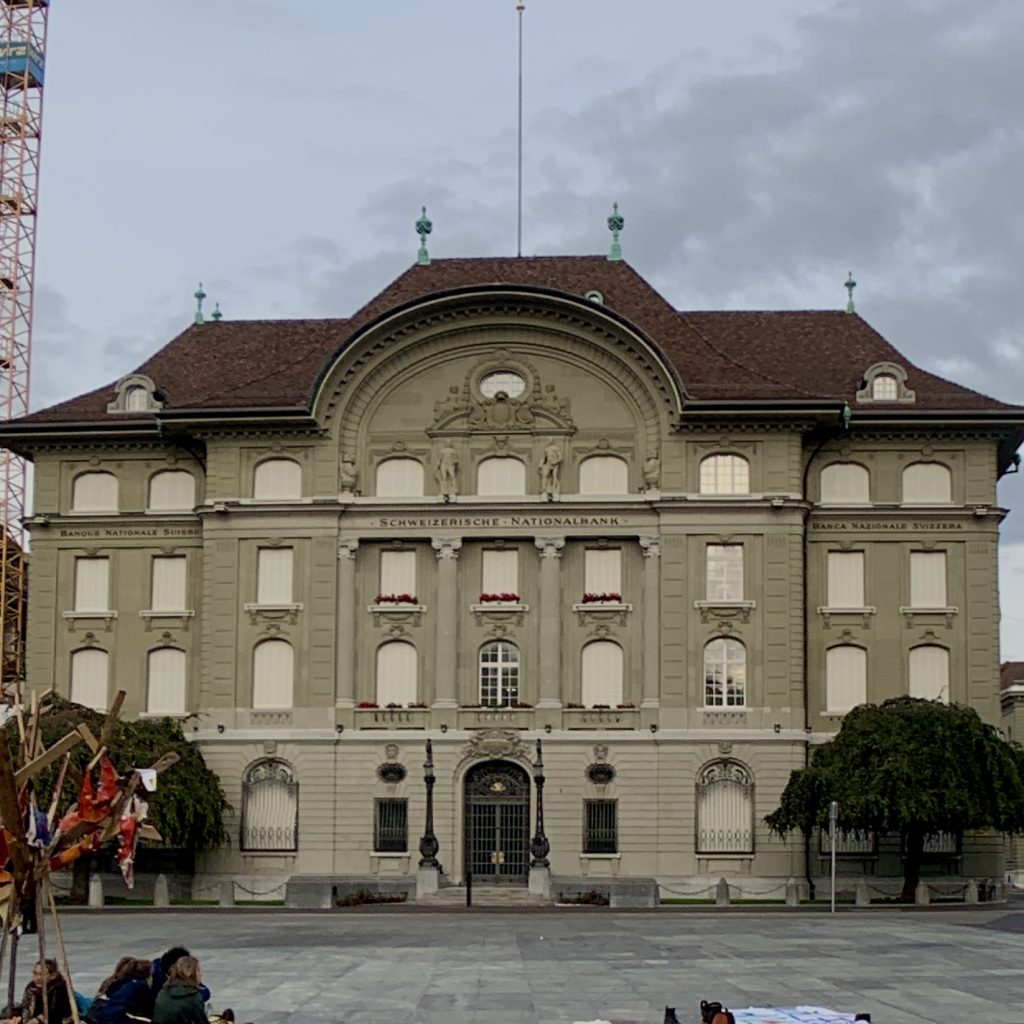
2. Money from Commercial Banks
Banks purchase government bonds using currency. When the government in turn buys back these bonds, the banks make money by receiving interest payments. Lending money to the government is largely considered a low-risk investment. The cycle goes on and on making the banks richer and increasing the national debt consequently leaving the public in big debt thereby impoverishing them.
Your money may be handled by the banks and their counterparts like hedge funds in investment activities that may be risky such as financial instruments like securities and derivatives. These investments can be simply gambles or bets on whether the price of an asset will rise or fall. The goal is to achieve higher profits. However, this practice can escalate to risky levels and become absurd. The seamstress nature of these risky financial tools was an important factor that led to the eventual downfall of the housing market and the subsequent global economic crisis that occurred in 2008.
Banks have turned from investing in the whole economy, where they were supposed to, to investing in stocks and properties. This metamorphosis has pushed stock and real estate prices up. Therefore, people borrow more money to purchase these assets that are now beyond their means. The banks then provide even more money to cope with the growing amount of monetary demand. This cycle has been a common phenomenon and has resulted in several stock and real estate bubbles.
3. Money from People and Businesses
Most people (both individual and business entities) use their money to fulfill their needs and desires. Some of them include investing in many different asset classes like property. Since these asset classes are mostly unaffordable, most people take loans to finance these investments. Because of this, taking on debt has become a normal part of our lives. Individuals, households, businesses, and even governments all rely on debt for financial stability.
Banks will gladly lend money because they regard investments in such sectors as a safe and profitable way of producing debt. They can easily grab hold of your property, for instance, your house or vehicle, if you fail to repay the loan.
However, excessive debt can lead to financial strain. A point is reached where people cannot take on any more debt and struggle to repay what they already owe. At this step banks no longer lend money, thus leading to default, and the economy as a whole begins to go down. This cycle of debt accumulation and crisis has repeated throughout history. It is a natural cycle that repeats itself over centuries.
Why the Government Rescues Banks
Governments do not directly provide support to the people; instead, it is the people who support the government by paying taxes. Taxation and trade are two principal methods governments use to generate income. This money is then used to settle the due loans from the central bank, with the accrued interest included. It is also used to bail out private banks.
The private banks not only can make loans but also take risky actions and may suffer losses. When this happens, governments have to use their central banks to save them. Central banks can rescue the banks by extending unlimited monetary aid. This leads to moral hazards. These are cases where banks become less accountable for their actions as the government will always bail them out.
Governments rescue the banks because they have become too big and connected with the supply of money. Remember, banks create around 97% of all currency in the form of debt. If this debt cannot be repaid, this invariably will lead to a catastrophic failure of the whole global financial system. When private banks are bailed out by central banks and the government uses public funds, in effect the general public bears the debt of their government.
Inflation
Excessive debt leads to a surge in money supply. This borrowed money flows into the stock, bond, and property markets, making them more expensive. Also, prices for most stuff and assets go up around the world. This then results in inflation. This benefits the few individuals who own a lot of stocks, making them extremely rich, while the real economy remains stagnant. Consequently, this growing gap in wealth between the rich and the poor contributes to wealth inequality.
Since the banks and the wealthy own most of the assets, inflation benefits them. The value of what they own increases. This means that the rest of the population will find it difficult to obtain these assets. They get loans to finance their investments like land, houses, cars, etc. Banks can manipulate the monetary system, for example by raising the interest rate, and this would mean default. The banks would result in taking possession of the asset that was being financed. The banks gain more assets while the individual, business or government becomes poorerThis cycle continues.
Starting from the 1980s, the vast majority of the elite people’s income has come from stocks. Post-2008, the stock market has become intertwined with the Federal Reserve. The more money they print, the higher the stock market climbs, further enriching them. Over four decades, from 1980 to now, their wealth has grown by an astonishing 420%.
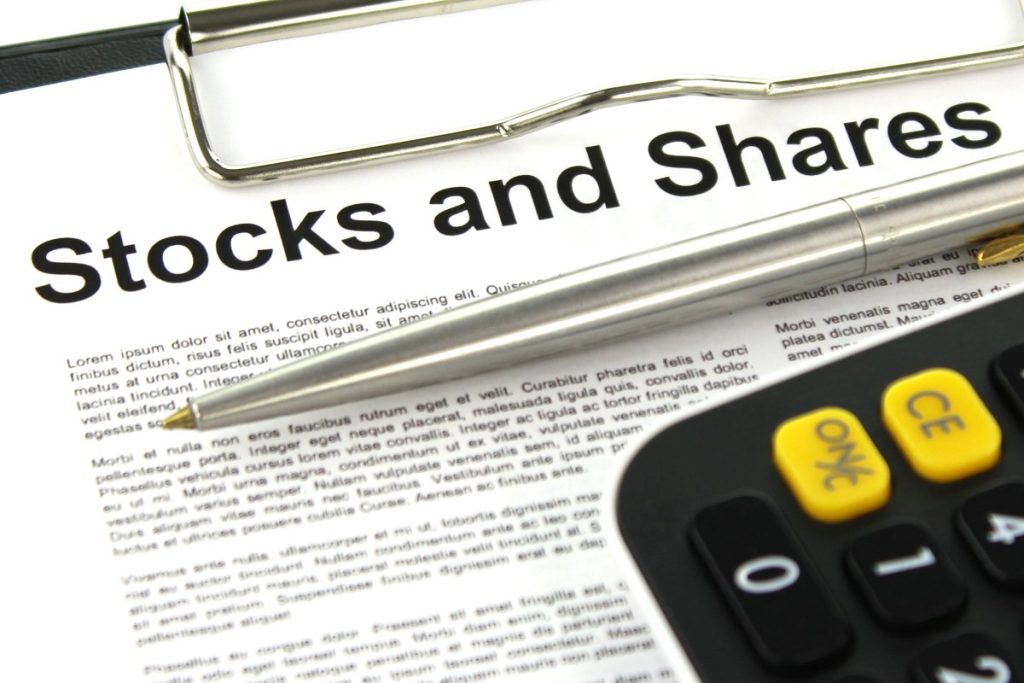
Conclusion
We have a system where we have to borrow to have an economy. We have to be in debt to the banks, and that guarantees a massive profit for the banks. We’re paying interest on every single coin. Even if you think the money belongs to you, somebody somewhere is paying interest on that money. Sadly, this debt usually falls on the shoulders of the impoverished or lower middle class. They end up paying interest on the borrowed money, which ultimately goes back to the bank. The banks can do virtually anything with that money.
The banking system is a dreadful but necessary hydra that gives us money that exists in our country. And here’s the catch: We are constantly forced to accumulate more debt. Unless the money supply is continually expanded the system will inevitably collapse. It is like a Ponzi scheme because you can never repay all your debts.
Every month, we have to borrow more money than we can pay back to keep the system alive. If we don’t keep expanding the money supply, the system will ultimately. Ironically, we have to protect them. We have to subsidize them. We have to allow them to continue because a collapse in the banking system would have disastrous consequences for everyone. Sadly, the current financial system is created in a way to make the commercial banks wealthier as they extract wealth from the poor and middle classes.


